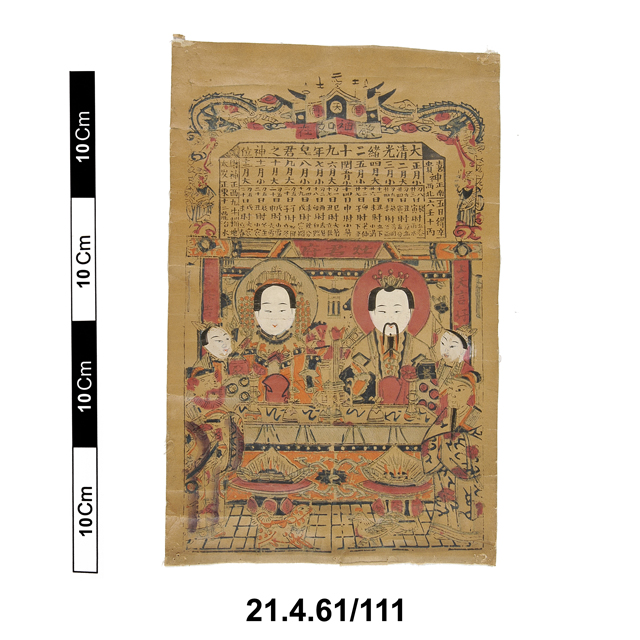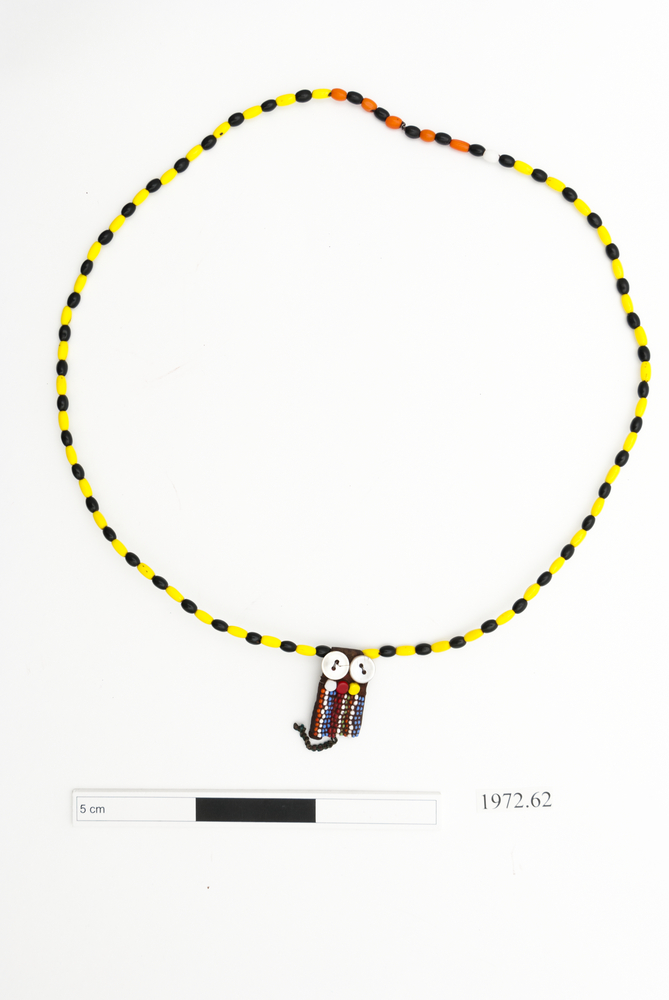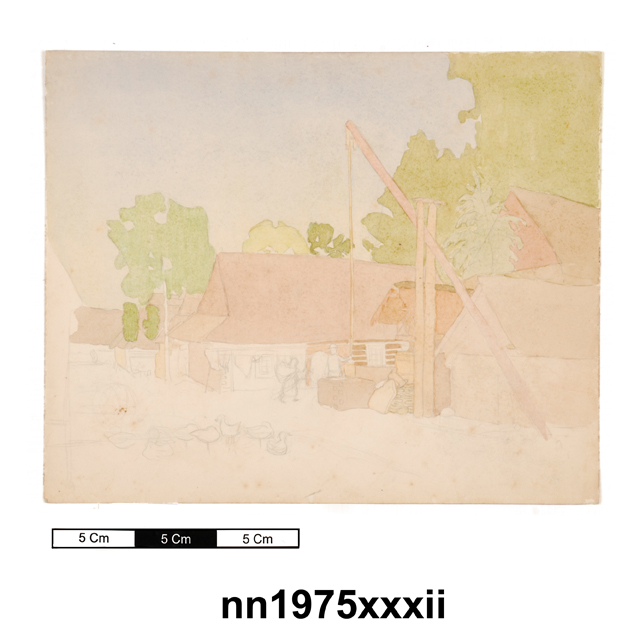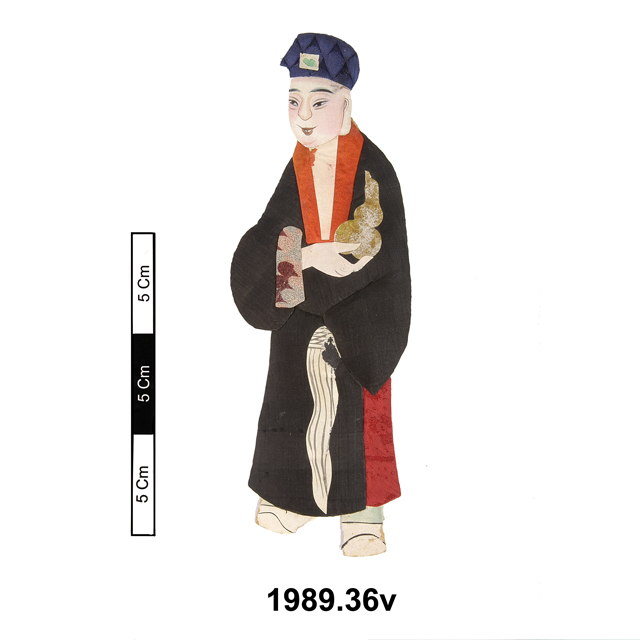
Scroll painting of a Kitchen God. Painted in polychrome on cloth-backed paper, the scroll depicts the Kitchen God, Tsao Chun, and his wife, seated at a table with two servants, one at each side, holding jars in which are stored the rewards or punishments for the deeds or misdeeds that have occured during the year. Two other servants stand in the foreground: they serve both Tsao Chun and the Jade Emperor, and are intermediaries between the heavenly and earthly world.
In a panel above is a text in three bands of Chinese characters. The top one reads 大清光緒二十九年皂 (灶) 君之神位, which means ‘Shrine of the Kitchen God in the 29th year of Emperor Guangxu’s Reign in Qing dynasty (1903)’. The second band is about the 12 months of Chinese calendar (a lunisolar calendar), including the information of ‘big months' (30 days) and 'small months' (29 days). The third band reveals the 24 solar terms, which is a calendar of 24 periods within each year and climate to govern agricultural arrangements in China. These terms all have meaningful titles. Some of them reflect the change of the seasons, for instance, ‘the Beginning of Spring’ (in Chinese: 立春, ‘Li Chun’); some embody the phenomena of climate, such as ‘the Waking of Insects’ (in Chinese: 驚蜇, ‘Jing Zhe’) or 'Pure Brightness' (in Chinese: 清明, ‘Qing Ming’); and some indicate the change of climate like ‘Lesser Heat’ (in Chinese: 小暑, ‘Xiao Shu’).
There are three bands with characters on the scroll. The top one reads 大清光緒二��年皂 (�) �之神�, which means ‘Shrine of the Kitchen God in the 29th year of Emperor Guangxu’s Reign in Qing dynasty (1903)’. The second band is about the 12 months of the Chinese calendar (a lunisolar calendar), including the information of ‘big months' (30 days) and 'small months' (29 days). For example, ‘January is the small month’ and ‘February is the big month’. The third band reveals the 24 solar terms, which is a calendar of 24 periods within each year and climate to govern agricultural arrangements in China. These terms all have meaningful titles. Some of them reflect the change of the seasons, for instance, ‘the Beginning of Spring’ (in Chinese: 立春, ‘Li Chun’); some embody the phenomena of climate, such as ‘the Waking of Insects’ (in Chinese: 驚蜇, ‘Jing Zhe’) or 'Pure Brightness' (in Chinese: 清明, ‘Qing Ming’); and some indicate the change of climate like ‘Lesser Heat’ (in Chinese: �暑, ‘Xiao Shu’).

































































































































































































































































































































































































































































































































